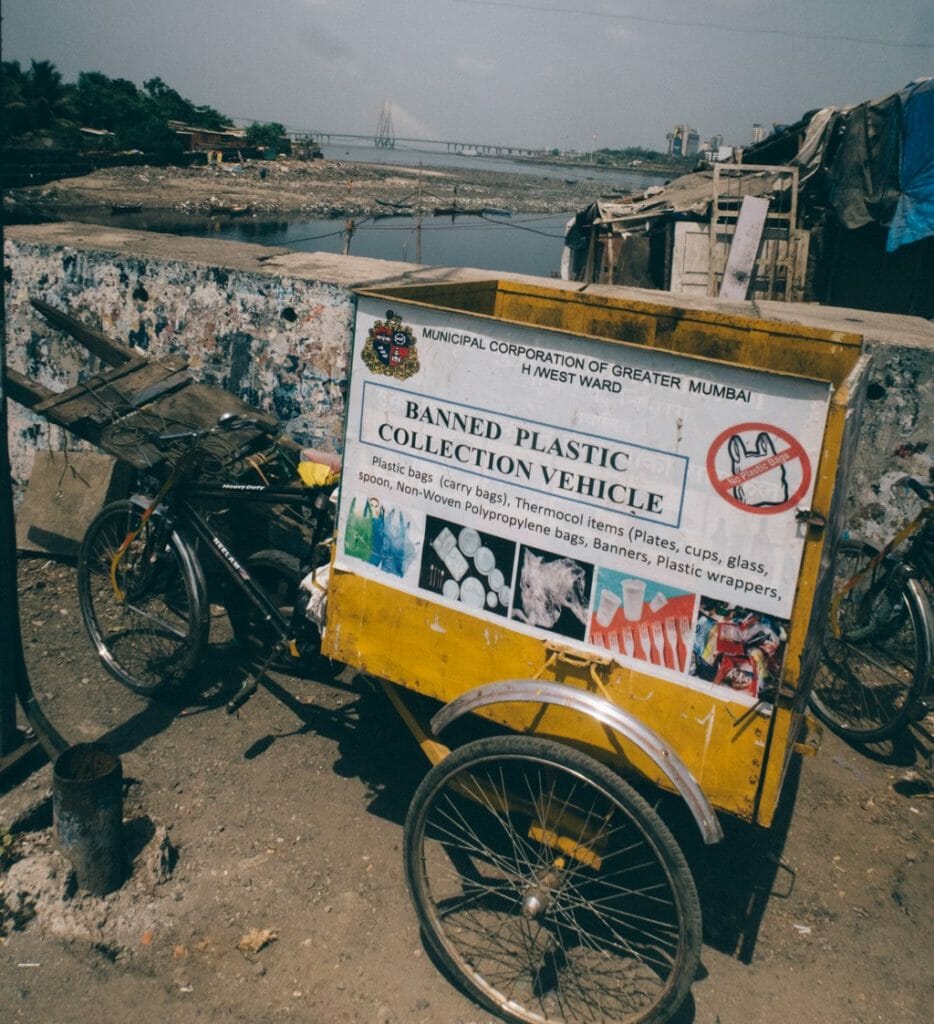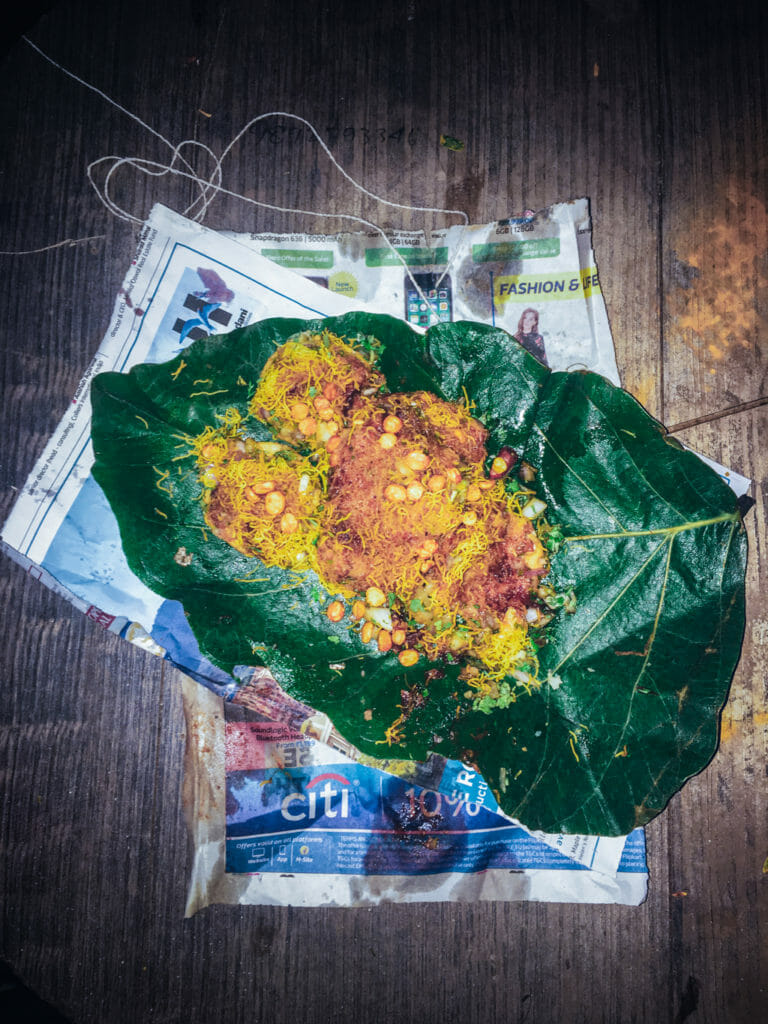On July 1st 2022, Mumbai introduced a brand new plastic ban along with the rest of the country. 21 selected single-use plastic (SUP) items were outlawed for their low utility and high littering potential. These include disposable cutlery, plastic sticks for candies, ice cream and balloons, plastic flags, thermocol for decoration and carry bags under 75 microns thick. Come January 2023, the minimum thickness required for plastic bags will increase to 120 microns.
But Mumbai has been under a far more extensive plastic ban since June 2018. Most of the products on the newly banned list have not been allowed for manufacture, transport, storage or use in the state for nearly four years now. Additionally, plastic bags of all types and thicknesses are prohibited. Doing any of the above comes with a starting fine of Rs 5,000, which can go up to Rs 25,000.
Yet upon renewal of their drive against SUP one and a half months ago, the Brihanmumbai Municipal Corporation (BMC) has collected 1,500 kg of the contraband and Rs 11 lakh in fines. A sign that, despite the claims of the BMC, the ban has remained largely on paper.

Who is responsible for the enforcement of the plastic ban?
According to the Maharashtra Pollution Control Board (MPCB), 22 departments across the state enforce the plastic ban. These include district and local administration bodies, municipal corporations, revenue departments, collectors, etc; the MPCB and BMC are two among them. The Central Pollution Control Board (CPCB) is an additional overlooker on matters regarding the central ban.
Violators face a hefty Rs 5,000 fine for the first offence, Rs 10,000 for the second, and a Rs 25,000 fine along with three months in jail for the third.
Between June 2018 and January 2022, the BMC collected over 2 lakh kg of plastic and Rs 5.36 crore in fines. But the ban has been punctuated by multiple starts and stops.
“Enforcement gathers a lot of steam at the beginning of bans, as we’ve also seen in Delhi,” says Priti Mahesh, chief programme coordinator at the environmental NGO Toxics Link. “But as the rules become older, efforts dwindle.”
The 2019 Lok Sabha elections first led to a lull in enforcement, with officials busy with election duty. The ban was revived again in 2020, only to be thwarted by COVID-19.
“Till there is plastic in the market, our enforcement will continue,” said an official from the BMC’s markets, shops and establishments department.
The effect on the ground
While plastic bags and banned items are certainly not a rarity on the streets of Mumbai, there are differences in opinion on whether the ban has had an effect.
Jeetu, the owner of the plastic recycling firm Bhavna Enterprises, reports a 25-30% reduction in recycling material coming his way. “Recycling companies are needed to get rid of plastic. But they’re depriving us of something that’s useful and easily recyclable, making the industry suffer,” he says.
But not all those in the waste sector share Jeetu’s evaluation. Sunita Patil of the Stree Mukti Sanghatana, an NGO working with Mumbai’s women waste pickers says, “The ban is only on paper. If you look in the market or in waste, there’s hardly been a reduction.”
Similarly, Ratish, a shopkeeper of a hole-in-the-wall kirana store in Bandra, considers the 2018 plastic ban largely ineffective. He blames the failure on the coalition MVA government, which was replaced by the BJP in June.
“Some shops, which can afford the fine, still keep plastic bags,” he says, hopeful that the new ban will stick.
Data tells an inconclusive story. According to reports by the MPCB, Maharashtra generated 4,09,630 tonnes of plastic waste in 2018-19, down from 5,01,462 tonnes in 2017-18. 2019-20 saw an uptick at 4,43,724 tonnes, with 2020-21 dropping to 3,11,254 tonnes. The plastic waste production in Mumbai, however, stayed the same in 2018-19 and 2019-20, at 98,550 tonnes.
Read more: Explainer: A citizen’s guide to living sustainably in Mumbai
What do plastic manufacturers say?
Preventing the manufacture of plastic is crucial to the effective implementation of the ban. Both the central and state ban not only the use but the manufacture, transport, distribution, import, wholesale and retail sale and storage of the items in question. And the BMC claims to have successfully nipped the bud at the source in Mumbai.
“The MPCB approached us and asked us to stop production,” says a former plastic bag manufacturer in Mumbai, who did not want to be named. “We had to shift our plant to Gujarat, like many companies. Some shifted to Daman and Diu. All the labourers had to move to other industries.”
Protests for job losses
Many plastic manufacturer associations held protests against the ban in February 2018, alongside other industry associations. They claimed over 50,000 firms faced the prospect of closure, affecting the 3-4 lakh workers.
The protests bought the industry some time, while lobbying and High Court petitions led to the state excusing milk bags and PET bottles from the ban.
Present day
The former plastic manufacturer estimates that only 100-150 illegal manufacturers remain in Mumbai, hidden in the slums of Bhandup. These are likely to be manufacturing plastic bags less than 50 microns thick, outlawed by the centre since 2016.
On the other hand, larger plastic processing firms for whom single-use plastic is just a fraction of their output have adapted to the ban without much complaint. “The products chosen for the ban come from micro or small processors,” says Deepak Lawale, secretary general of the Organisation of Plastics Processors of India (OPPI).
In the cases they do, they’ve had an easier time switching to alternatives; paper straws instead of plastic ones, thicker or compostable plastic bags if outside Maharashtra, for example. The resultant price hike is borne by vendors.
Limitations of a state-wide ban
Tackling plastic at the source might seem like the best way to make the ban last. But a state-wide ban, like Maharashtra’s in 2018, does not cover all bases.
“Mumbai is very close to one of India’s largest plastic-producing states, Gujarat,” says Siddharth Singh, program manager at the non-profit Centre for Science and Environment (CSE). “There is little the BMC can do to block the banned items coming in from other states.”
State-centric bans create production and supply complications that set the ban up for failure, both Siddharth and Priti agree. “If the rules are not standardised, the producer will have to tweak their packaging just for the state. That’s unlikely to happen,” Siddharth points out.
These factors make it more likely the central ban will succeed, says Priti.
“The CPBC has written to plastic producers, warning them of the heavy environmental compensation fee, imprisonment and licence cancellation they face if they’re found manufacturing the banned items,” says Siddharth. “But only this does not guarantee enforcement. The state pollution control boards will have to hunt down the places plastic is still being manufactured and take some action against them.”

The way forward
Siddharth suggests that the state’s plastic ban should stay in step with the current central ban, rather than leapfrog ahead of it in an attempt to be a pioneer. After all, 33 other states and union territories have varying degrees of plastic bans and levels of enforcement. “Every state should make sure they’re meeting the minimum 21-item ban. Only then should they look into including more items under the ban,” he says.
This, in turn, will depend on the availability and feasibility of alternatives to plastic. “Shifting from plastic comes with a huge cost. A plastic bag might cost 10 paise, while an alternative might cost Rs 10,” says Priti. “The gap between them will have to be reduced, perhaps by making plastic more expensive and the alternative cheaper.”
And when they are present, says Siddharth, they need to be available in abundance and at affordable prices for everyone. A plastic tax, or conversely, tax exemptions for alternatives, can play a part here.
Priti adds that not all alternatives match the utility plastic lends. Paper bags, for example, are not convenient in the monsoon. Meat, fish and milk sellers resorted to camouflaging plastic bags with paper or had to contend with expensive and weaker materials. “People don’t feel that alternatives are as good as plastic to use, which stops them from making the switch,” she says.
But both Siddharth and Priti emphasise a holistic approach, changing behaviour with awareness, involving citizens and students along with sustained enforcement.
“If not, plastic will continue to choke the sewers, bringing floods each year,” reminds Siddharth.
Items banned by the Maharashtra government with the Maharashtra Plastic and Thermocol Products (manufacture, usage, sale, transport, handling, and storage) Act
- Non-woven and woven plastic bags, with and without handles
- Disposable cutlery and containers made of plastic or thermocol,
- Plastic straws,
- Compostable plastic bags, except for plant nurseries, horticulture, agriculture and solid waste,
- Packaging under 50 microns thick,
- Thermocol for decoration,
- Plastic-coated and laminated disposable cutlery and containers made of paper or aluminium (added by an amendment dated July 15th, 2022).
Items banned by the central government with the Plastic Waste Management (PWM) Rules, 2016
- Sachets of gutkha, tobacco and pan masala,
- Carry bags less than seventy-five microns thick,
- Earbuds with plastic sticks,
- Plastic sticks for balloons, plastic flags, candy and ice cream,
- Polystyrene (thermocol) for decoration,
- Plates, cups, glasses, cutlery such as forks, spoons, knives, straws, trays, stirrers
- Wrapping or packing films around sweet boxes, invitation cards and cigarette packets,
- Plastic or PVC banners fewer than 100 microns thick.